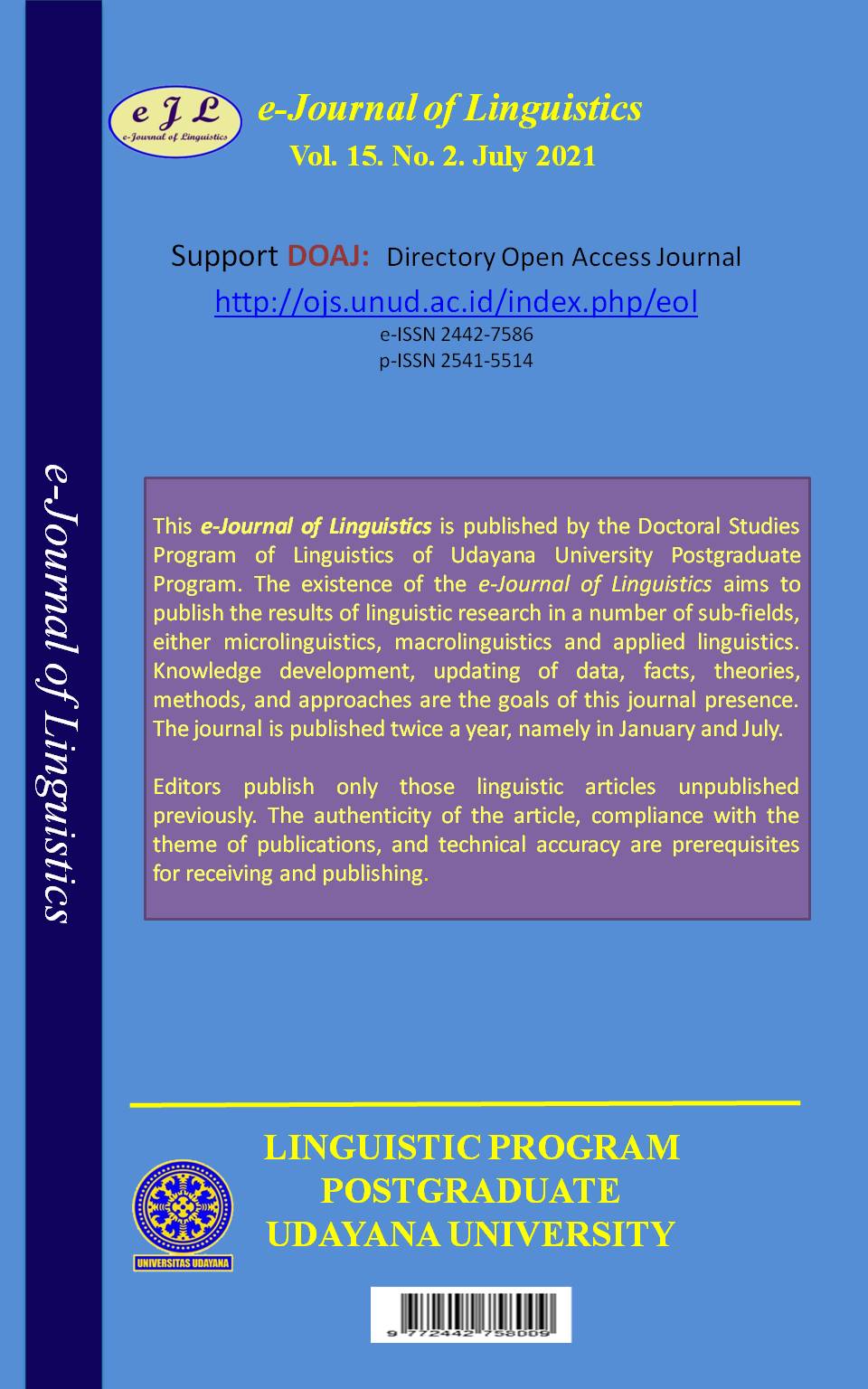The Analysis of Wonderful Indonesia Logo: Sanders Peirce's Triadic Theory
Abstract
The Wonderful Indonesia logo is an Indonesian tourism identity formed by verbal and non-verbal elements. The verbal element is the words "wonderful Indonesia" and the non-verbal element is a picture of "bird" such as the eagle which is a symbol of the Indonesian state. Charles Sanders Peirce's Triadic theory mentions three main elements that make up the Wondeful Indonesia logo, namely: object, representation and interpretant.
The representation is expressed in the written language of “wonderful Indonesia” with artistic writing, flexible, elegant and beautiful fonts. It is interpreted that Indonesia is one of the world's most beautiful, charming and enchanting tourist destinations. The writing of "Indonesia" is bigger than the word “wonderful” so that it is interpreted that Indonesia is the one that has a variety of charms.
The object, in the form of a bird image, is like a Garuda. The head, wings, tail and body of the bird are displayed with flexible, beautiful, artistic lines, reflecting that Indonesians have a flexible, friendly, peace-loving character and are welcome to the world community.
The word "wonderful" is written in English as world’s of language It is hoped that this word which has a great, amazing, enchanting meaning can easily come to the citizen of world’s mind.. Based on the function of language, the word "wonderful" has a poetic function, which is a message to be conveyed to the world, that Indonesia is very charming, amazing, unique and interesting.
Downloads
References
Kusrianto, Adi. (2009). Introduction to Visual Communication Design. Yogyakarta: Publisher Andi.
Moleong, Lexy J.(2014). The Qualitative Research Revise Edition: Bandung Remaja Rosdakarya.
Murphy, John and Michael Rowe. (2000). How to Design Logos, Symbol and Icons. Ohio : North Light Books.
Nugroho, Eko. 2008. Pengenalan Teori Warna. Yogyakarta: Penerbit Andi.
Peirce.C.S. 1998. Principles of Philosophy, Volume I, Ed: Charles Hartshorne & Paul Weiss, Colected Papers of Charles Sanders Peirce. England : Thoermmes Press.
Piliang, Yasraf Amir. 2010. Hipersemiotika: Tafsir Cultural Studies atas artinya Makna.Yogyakarta: Jalasutra.
Sarpavaara, H. (2013). A Peircean analysis of counselors’ interpretations and clients’ responses in motivational interviewing sessions. Social Semiotics, 23(1), 67–82. https://doi.org/10.1080/10350330.2012.693297.
Sebeok, T. (2001). Signs: An Introduction to Semiotics (Toronto Studies in Semiotics and Communication). University of Toronto Press.
Wayan, N., & Tista, K. (2020). Process Types of Transitivity System in The Ritual Teks of Tawur Sasih Kesanga in Desa Adat Kuta. E-Journal of Linguistics, 14(2), 257–267.
Yakin, H. S. M., & Totu, A. (2014). The Semiotic Perspectives of Peirce and Saussure: A Brief Comparative Study. Procedia - Social and Behavioral Sciences, 155(October), 4–8. https://doi.org/10.1016/j.sbspro.2014.10.247.

This work is licensed under a Creative Commons Attribution 4.0 International License











